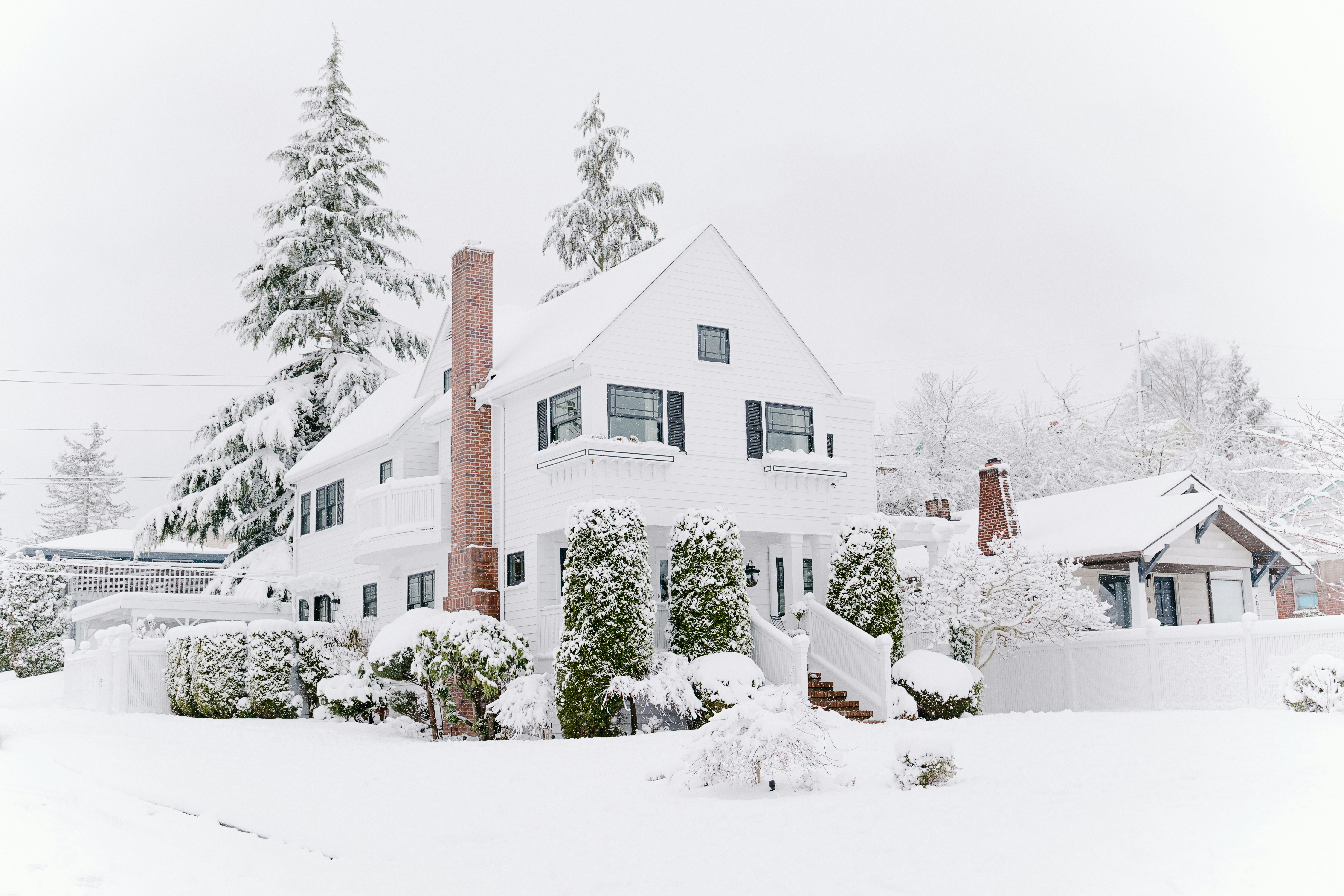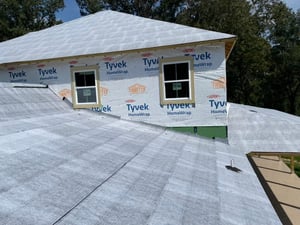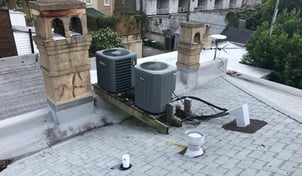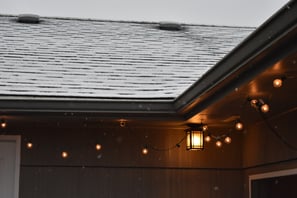
Have you ever wondered how your roof stays strong when snow piles up, or rain pours down? I mean, with all the insane weather we get in the South, it feels like a miracle that our roofs hold up for so long. That's where ice and water roof barriers (or shields) come in! These aren't your ordinary roofing materials; they're an essential part of your home, working quietly to protect it from sneaky water and icy trouble.
Here at RoofCrafters, we've installed ice and water barriers on roofing systems for nearly thirty years. We know more than anyone that they're crucial elements of your home. In this article, we're going on a quest to discover the world of roof barriers. Picture them as part of an intricate system hidden underneath your roof, stopping water from causing leaks and making your home all soggy. They're silent defenders, fighting against water, trying to find its way into your cozy space.
We'll explore what this underlayment is all about, why they're so important, and how they do their magic to keep your house dry and comfy. By the end, you'll know how these special shields are like your roof's best friends, working hard to keep you safe and dry, no matter the weather outside! Ready to dive into the world of ice and water barriers? Let's go!
Why Are Ice and Water Barriers Essential?
Ice and water roof barriers are crucial components that you should understand when it comes to protecting your roof from potential water damage. These barriers are specialized self-adhesive membranes designed to shield vulnerable areas of the roof, particularly where ice dams might form or where water intrusion is more likely during heavy rains or snowstorms.
These barriers serve as an extra layer of defense against water penetration. Installed underneath the roofing material, typically along the eaves and in valleys, these barriers adhere tightly to the roof deck, creating a watertight seal. They work by preventing water from seeping through vulnerable areas, even if the roofing material gets damaged or punctured. Ice and water barriers are crucial in regions prone to heavy snowfall or freezing temperatures, as they help prevent ice dams from forming at the roof's edge, which could lead to water backing up under the shingles and causing leaks into the home.

As a homeowner, you should know that proper installation of these barriers is vital. Ensuring they are correctly applied and sealed around roof penetrations like vents or chimneys is essential for their effectiveness. Additionally, understanding that these barriers are not a substitute for proper roofing materials and techniques is crucial. They act as an added safeguard against water intrusion, but they work best in conjunction with quality roofing materials and proper roof ventilation.
Side note- be aware of local building codes and regulations regarding the installation of ice and water barriers. Some areas with specific weather conditions might require these barriers to be installed up the roof slope to a certain height, ensuring maximum protection against potential ice damming and water intrusion. But don't worry, your roofer will help you out in that department. Regular roof inspections, especially after extreme weather events, are also advisable to check the integrity of these barriers and ensure they are performing their protective function effectively.
So, what did we learn? In essence, ice and water roof barriers are critical components that provide an extra layer of protection against water intrusion and ice dam formation. Understanding their purpose, proper installation methods and their role as supplementary protection in conjunction with quality roofing materials is essential for homeowners looking to safeguard their homes from potential water damage.
How Can You Protect Your Roof from Ice Damming?
Protecting your roof from ice damming involves various preventive measures to minimize the risk of ice dams forming and causing potential water damage. Here are some steps to consider:
- Proper Insulation: Ensure your attic has adequate insulation to maintain a consistent temperature on the roof surface. A well-insulated attic prevents heat from escaping and melting snow on the roof, reducing the chances of ice dams forming.
- Ventilation: Proper attic ventilation helps regulate the temperature and moisture levels in the attic. Good airflow helps keep the roof surface cool and prevents snow from melting unevenly, reducing ice dam formation.

- Sealing Air Leaks: Seal any gaps, cracks, or air leaks in the attic to prevent warm air from escaping and reaching the roof surface. Focus on areas around vents, chimneys, and electrical fixtures to maintain a consistent temperature.
- Ice and Water Barriers: Install ice and water barriers along the eaves and in valleys underneath the roofing material. These specialized membranes help prevent water intrusion in vulnerable areas, even if ice dams form.
- Snow Removal: Safely remove snow from the roof using a roof rake or hiring professionals. Removing snow helps eliminate the buildup that contributes to ice dams. However, it's crucial to do this cautiously to avoid damaging the roofing material.

- Heated Cables: Consider installing heated cables or heat tapes along the roof's edge to prevent ice dams. These cables help melt snow and ice, creating a path for water to drain off the roof.
- Professional Inspection: Schedule regular roof inspections by professionals, especially before winter. They can identify potential issues, assess the roof's condition, and recommend necessary measures to prevent ice dams.
By implementing these preventive measures, you can significantly reduce the risk of ice dam formation and minimize the potential for water damage to your roof and home during winter months.
Does Your Roof Need Ice and Water Protection?
Remember, these barriers are part of a system that protects and defends your roof, working silently to stop leaks and water damage. They're pretty darn essential, especially in places where snow or heavy rain are expected. We know snow isn't as common in the southeast, but we do still get it and staying prepared in key.
By having these barriers installed right under your roofing, you're giving your home an extra layer of TLC They're not the only thing that keeps your roof safe, but they sure do play a crucial role in keeping things dry and cozy inside your home.
Ready to talk to a professional? If you live in one of our service areas, help isn't far away! When you're ready, visit our contact page to connect with one of our friendly RoofCrafters representatives. We're excited to begin your roofing project!
My name is Kevin Mills, and I am the lead estimator for RoofCrafters’ Tampa division. I’m originally from Michigan, and I enjoy hunting, fishing, and spending any free time outdoors. What I’m most passionate about, though, is helping business owners and homeowners alike achieve their roofing goals, all while providing a seamless customer journey.




